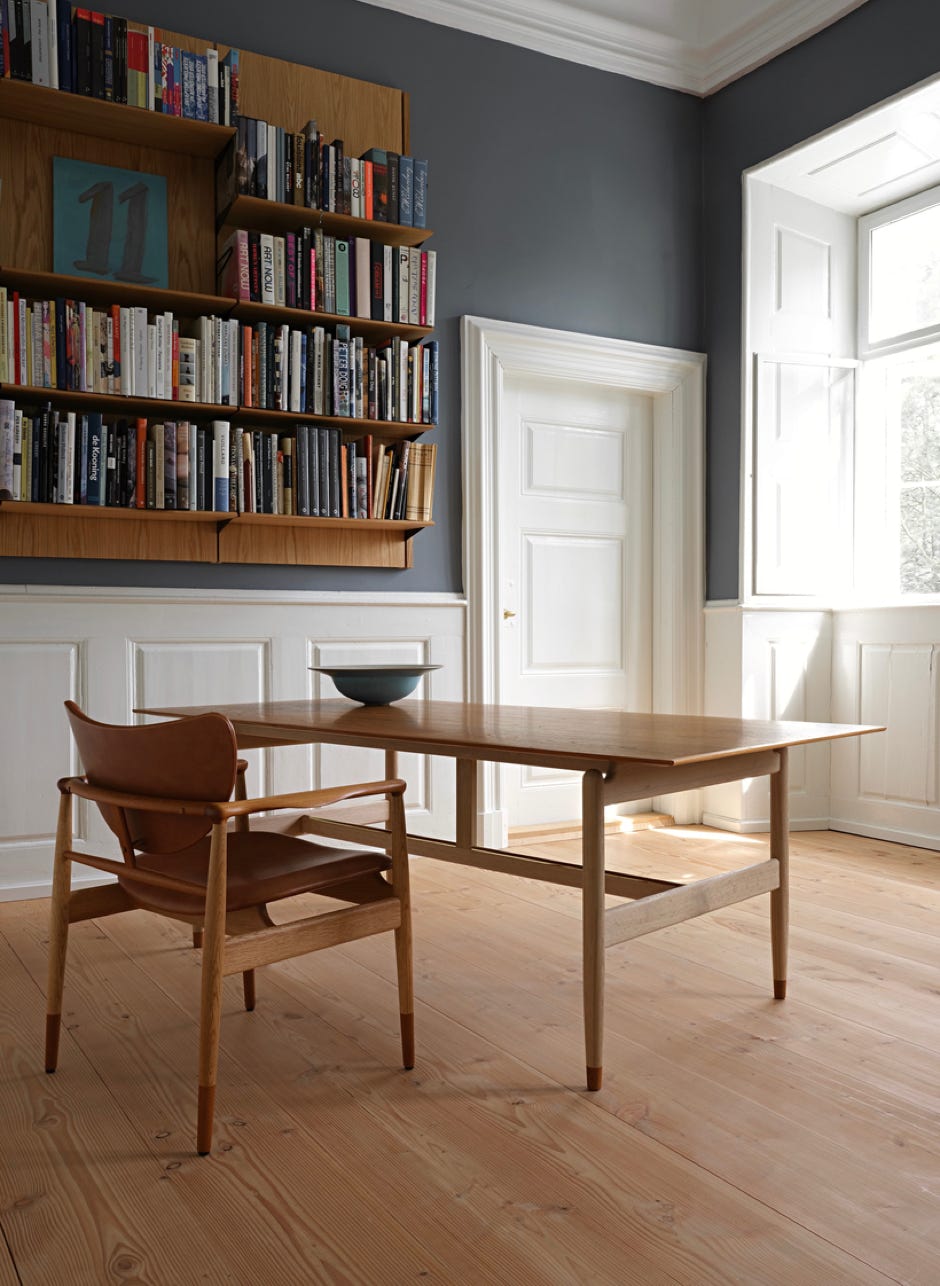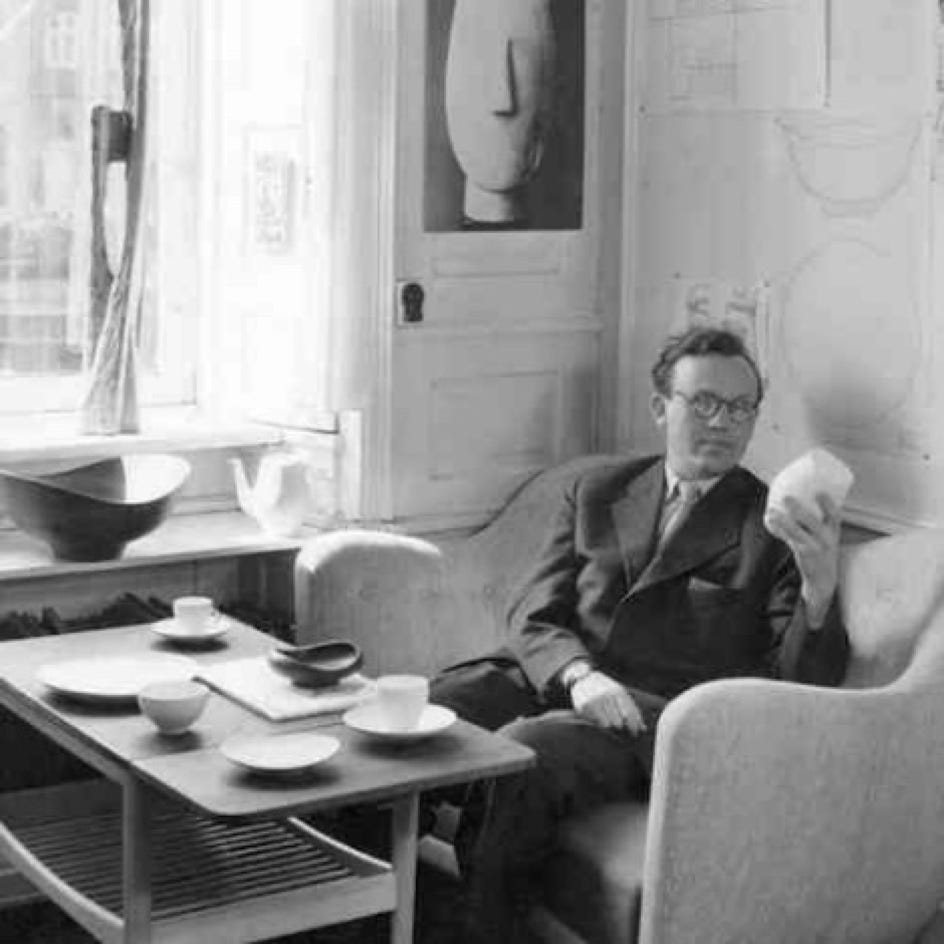15% off with DESIGN15


Like many of his iconic creations, Finn Juhl designed the Kaufmann desk for his own home. Almost entirely handmade, the table is constructed from solid oak with a walnut veneer top in the centre and solid walnut on the edges. The very thin profile of the top and its darker colour give the impression that it is suspended from the lighter oak structure.
Finn Juhl liked to mix wood species and visually separate load-bearing and supporting elements. The many details of the table's design have both a practical and visual function. The brass detail on the crossbar gives the table an exclusive look and at the same time protects the wood from dirt if you are tempted to put your feet on it.
As Finn Juhl never gave the table a name, House of Finn Juhl decided to dedicate it to his lifelong friend, the former director of the Museum of Modern Art in New York, Edgar Kaufmann Jr, who 'discovered' Finn Juhl and was instrumental in launching his international career.
Tabletop Walnut veneer with solid edges Frame Oak with brass footrest Feet Walnut
Dimensions 202 x 94 x H71,5 cm
Kaufmann Desk

As a teenager, Finn Juhl (1912-1989) wanted to become an art historian after having been fascinated by fine arts since childhood. His father prevented him from doing so and he studied architecture. Later, once his reputation as a furniture designer had been acquired, he would speak of himself as a self-taught man, certainly in reference to this thwarted vocation which forced him to make his intellectual journey alone. His very singular style owes much to this non-linear trajectory, with a very unacademic interpretation of art visible in his work. Finn Juhl began his studies in 1930, a key period that saw the birth of modern design and furniture.
His ultra-modern offices in the center of Copenhagen greeted visitors with a huge Japanese paper fish, a symbol of imagination. And rather than approaching furniture design from a functional, classical perspective, Finn Juhl approached his work as a sculptor. He sought beauty in volume and form, life and expressiveness. An approach that in the 1940's and 1950's was totally unprecedented. For Finn Juhl, it was clear that a piece of furniture could not be limited to a function, but also had to express an artistic sensibility.
While he remains world-famous for his furniture, Finn Juhl also designed several interior architecture projects and a few industrial products, including IBM typewriters. His greatest commercial success was with the Baker Company in the United States, which allowed him to mass-produce several pieces of furniture.
As an architect, he is known for the interior design of the United Nations Council in New York.